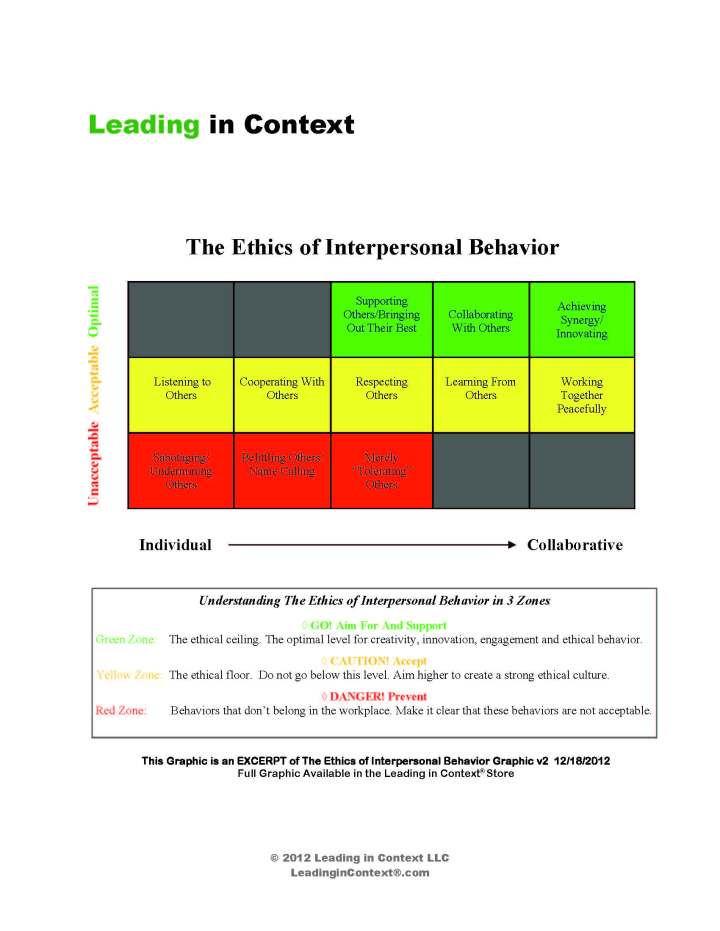By Linda Fisher Thornton
The Evolving Graphic
This graphic is a revision of one originally published on April 27, 2011 and includes multiple changes based on reader feedback. It was created to help leaders visualize what respectful and ethical behavior looks like in organizations.

The Respect Zones
The Green Zone is the optimal behavior for creativity, innovation, engagement and ethical behavior. The Yellow Zone is the minimum standard for ethical interpersonal behavior. The Red Zone includes behaviors that are not acceptable in the workplace.
If you want to build a respectful workplace, teach people to stay in the Yellow and Green Zones, and let them know that behaviors in the Red Zone are not acceptable.
This excerpt shared with you today is an abbreviated version of a full graphic called The Ethics of Interpersonal Behavior.

For more, see new book 7 Lenses and the 21 Question Assessment: How Current is My Message About Ethics?
 2014 Axiom Business Book Award Winner
About 7 Lenses
Info@LeadinginContext.com @leadingincontxt @7Lenses
2014 Axiom Business Book Award Winner
About 7 Lenses
Info@LeadinginContext.com @leadingincontxt @7Lenses
© 2012 Leading in Context LLC
Thank you, Luis for your interest in ethical interpersonal behavior and the “What Does Respect Look Like?” post. I will add your request for more about “unacceptable behavior” to my list of topics for future blog posts. In the meantime, I also wrote about it in my new book 7 Lenses: Learning the Principles and Practices of Ethical Leadership (check the index under “behaviors to avoid”).
LikeLike
Hi Linda, I will recommend my peers to take a look at this chart and article. Can you elaborate a little more on another article about examples of the ‘unnaceptable behavior’? I am specially interested on the concept for ‘sabotaging’ as I am frequently attacked as a Quality person for any mistake I do, the attacks come in the form of insinuation that I am not capable, the metrics tools and processes I produce are not reliable, etc. There are some coworkers who are often pointing to my mistakes and let the rest of the team know it, and they create a hostile environment opposed to collaboration and learning.
LikeLike
Thanks Mark! There are definitely benefits to businesses that embrace the optimal interpersonal behaviors. I appreciate you taking the time to comment.
LikeLike
Nice graph and information Linda. Organizations that have morals based cultures tend to be more profitable, more collaborative, and clearly practice transparent and honest behaviors.
LikeLike